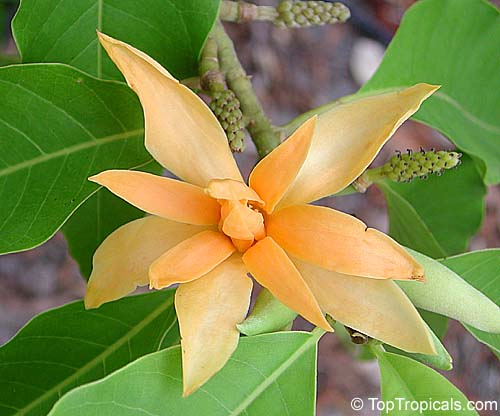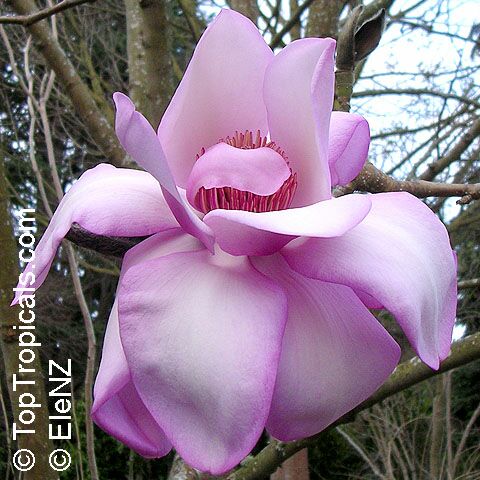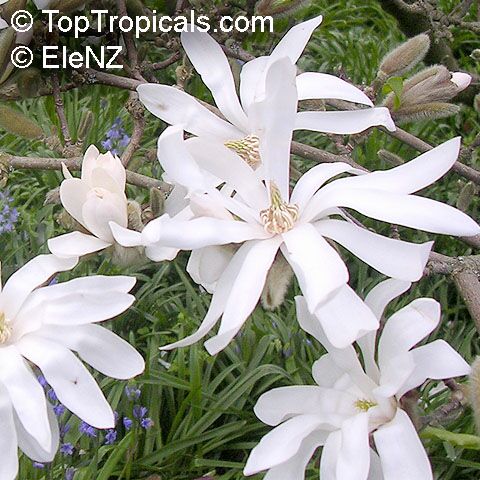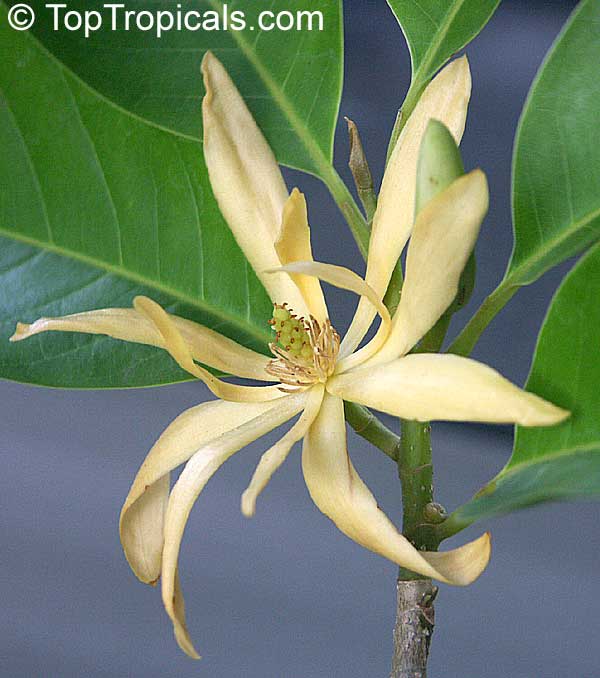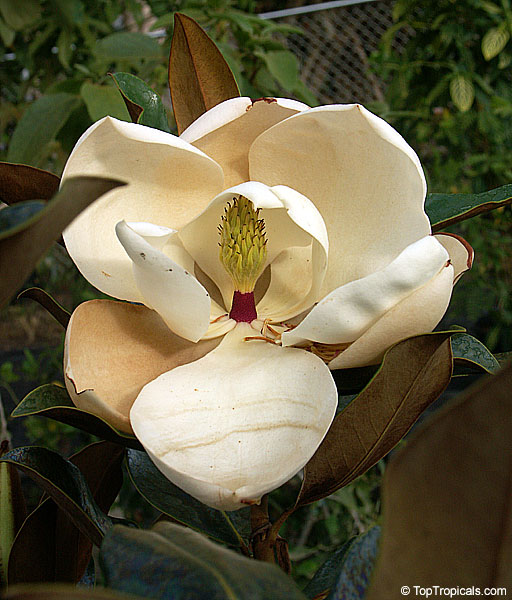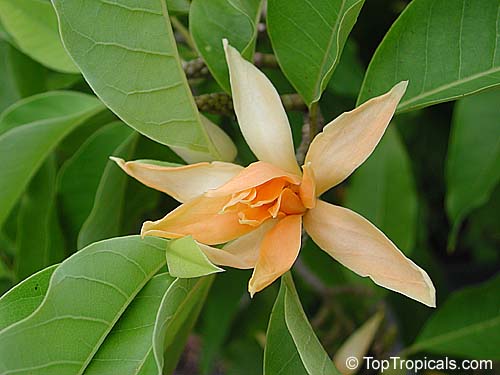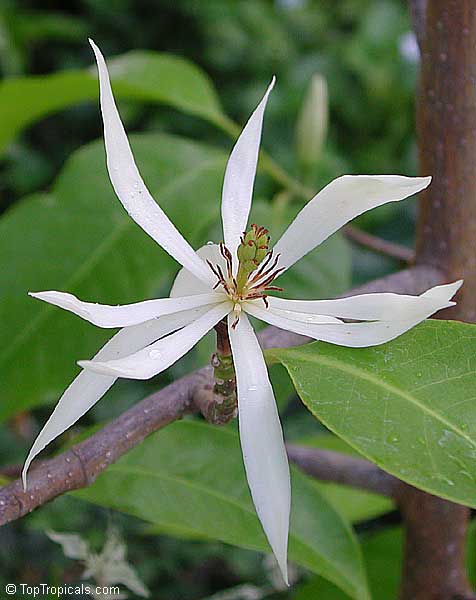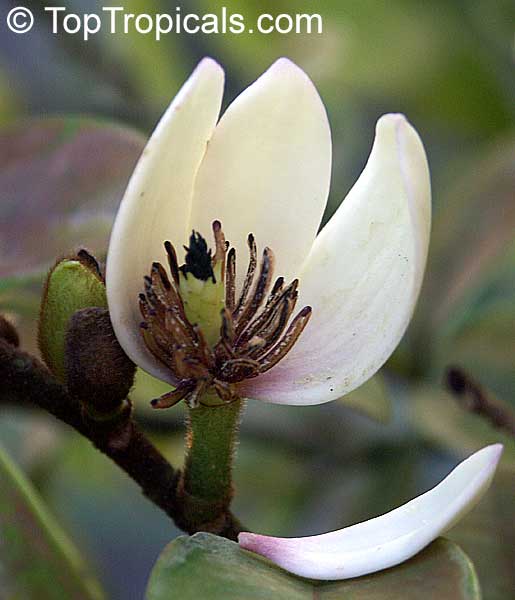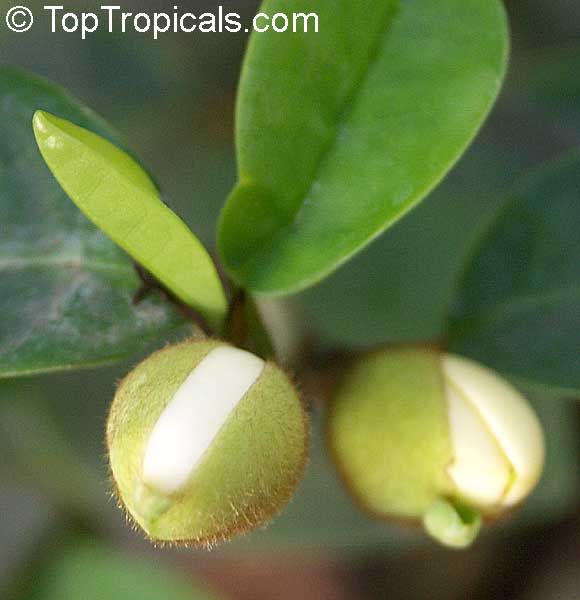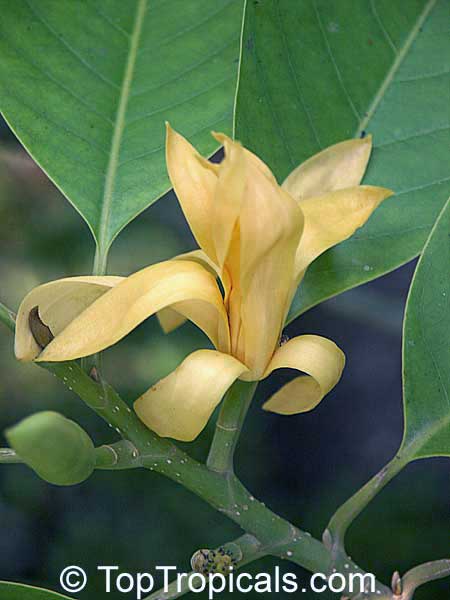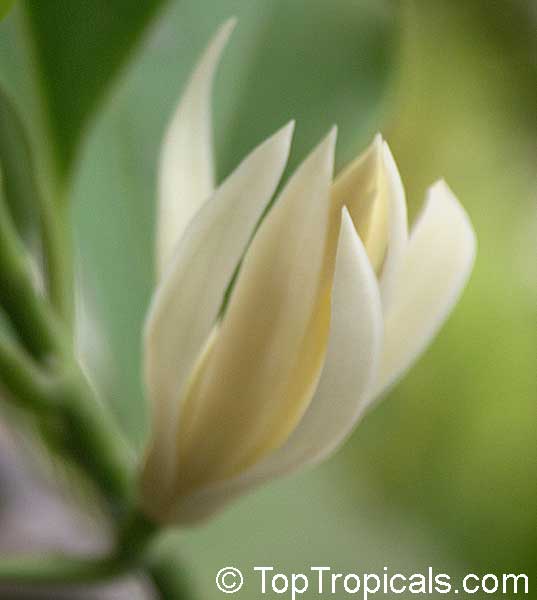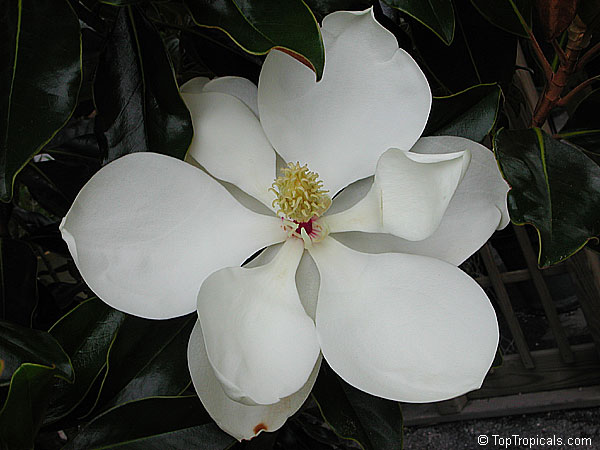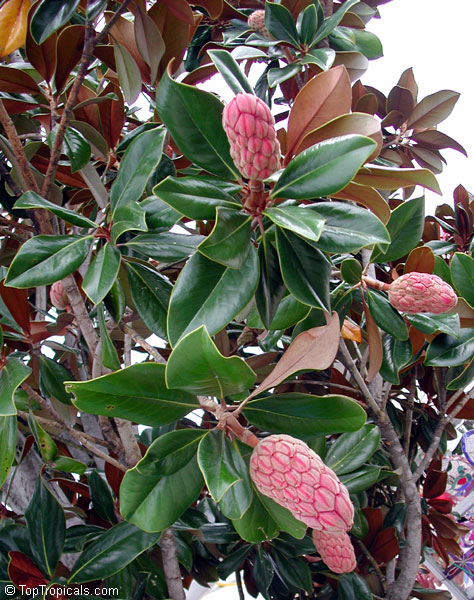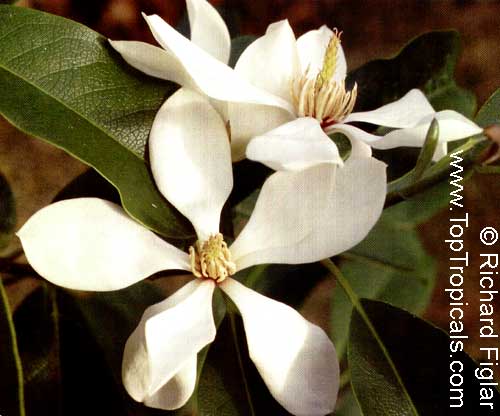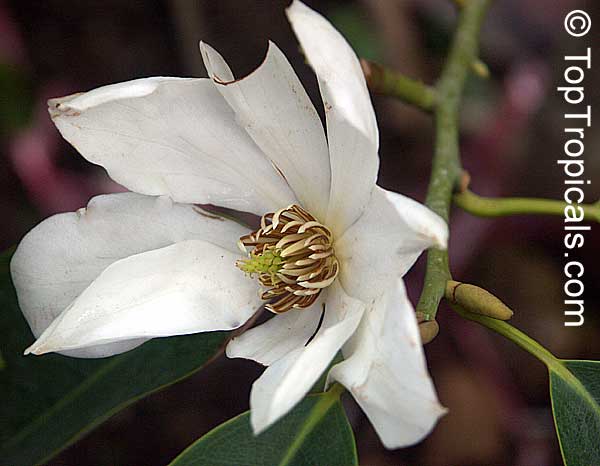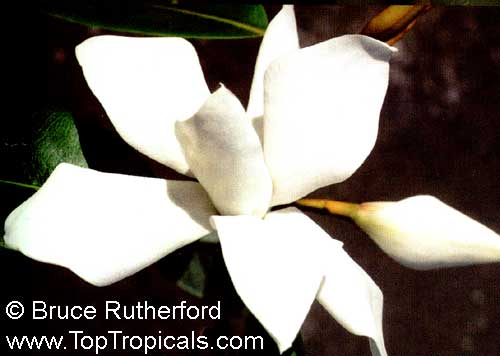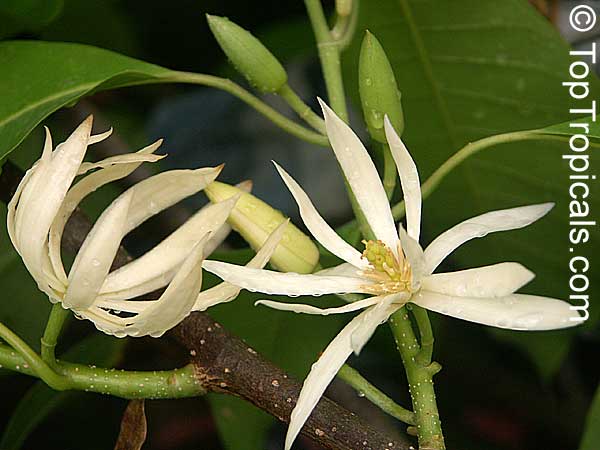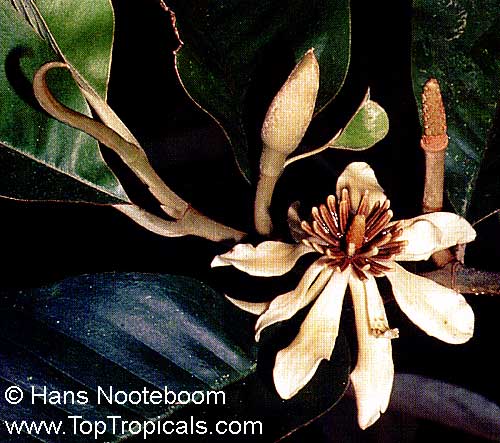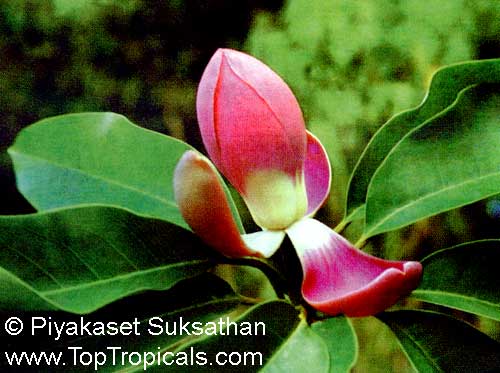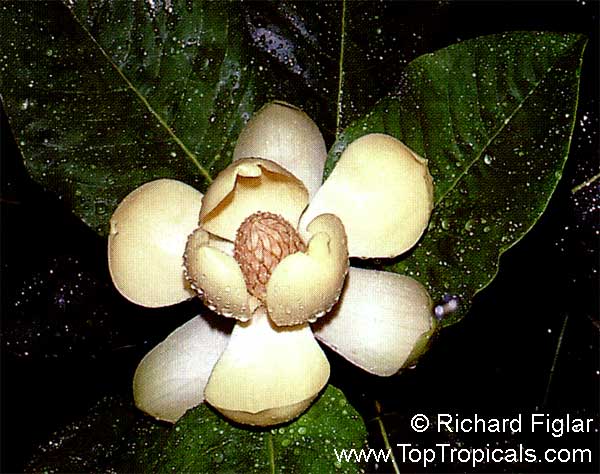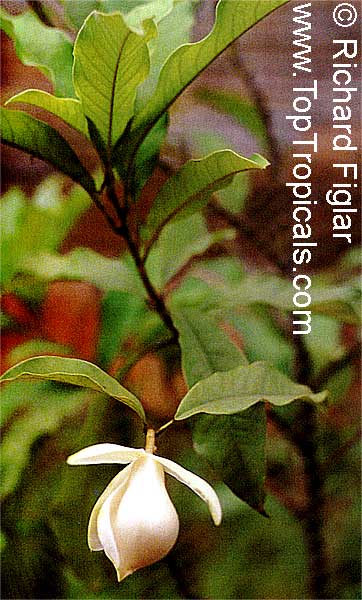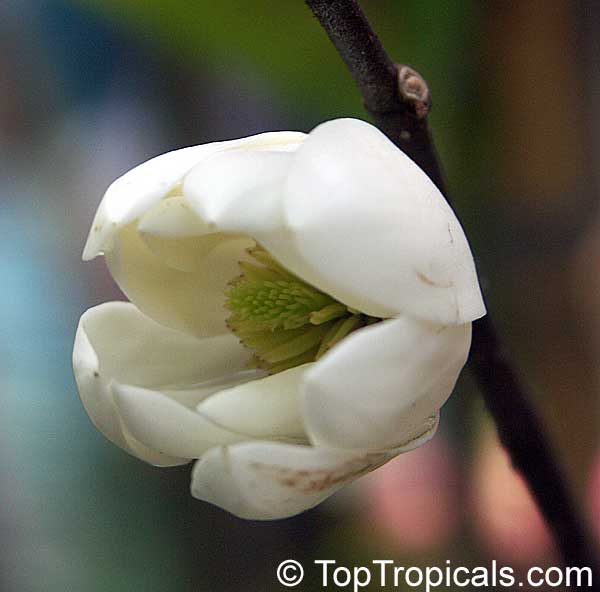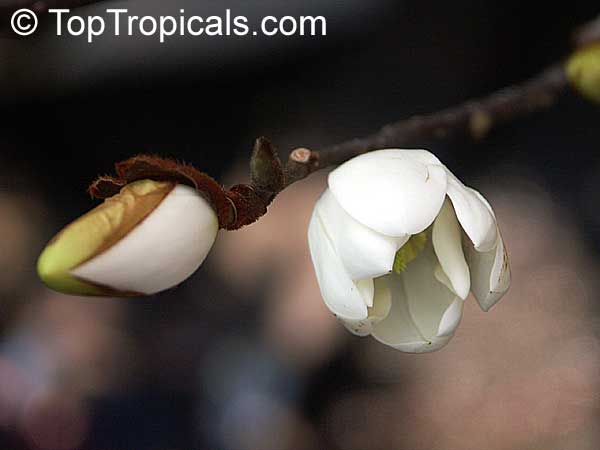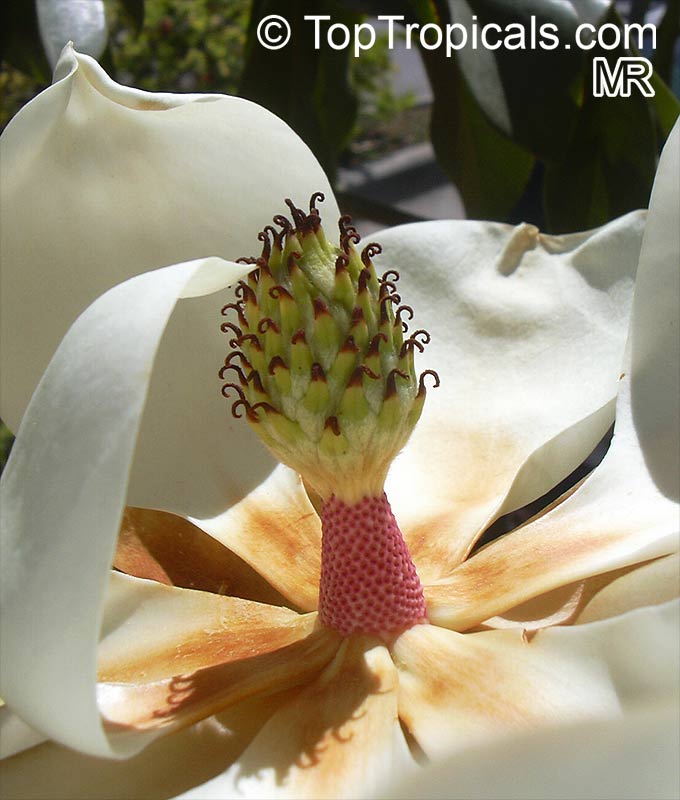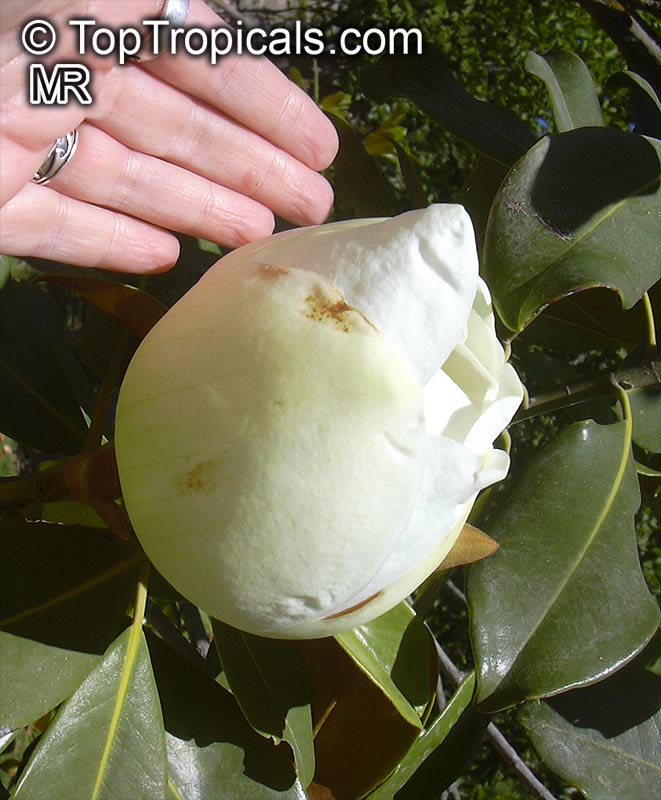Tropical Magnolias
by Richard Figlar
Richard B. Figlar (South Carolina) is a past president of the Magnolia Society and has been growing and studying magnolias for the past 25 years. Considered one of the world's foremost authorities on the genus, Figlar is a frequent author and lecturer on the subject. He served as vice-chairman of the International Symposium on the Family Magnoliaceae in Guangzhou, China in May 1998.
www.Magnoliaceae.org
//www.magnoliasociety.org
This article was published in Tropical Gardener magazine and is presented here with the Author's permission.
Successful and innovative magnolia breeding programs have produced an almost bewildering assortment of hardy deciduous magnolias that are suitable for most temperate regions. Less has been done to broaden the choices of gardeners in tropical and subtropical regions, but this may be about to change.
Until recently, when asked about magnolias, most gardeners outside the tropics and subtropics would probably limit their answer to Magnolia x soulangeana, the Saucer Magnolia. This deciduous hybrid blooms in early spring and is widely grown throughout the world's temperate zones.
More knowledgeable northern gardeners would go on to name a few other deciduous varieties, such as white-blooming M. denudata and purple-flowered M. liliiflora - the parent species of the saucer magnolia - and the Star Magnolia, Magnolia stellata. Gardeners in the warm temperate to tropical regions, in contrast, were most likely to cite Magnolia grandiflora, the Bull Bay or Southern Magnolia, as the first, and sometimes the only, species of magnolia they could name.
In the past 10 years or so, however, successful and innovative magnolia breeding programs have produced an almost bewildering assortment of hardy deciduous magnolias that are suitable for most temperate regions. Some of these cultivars produce flowers in new, more vibrant colors or even mixed hues. Less has been done to broaden the choices of gardeners in tropical and subtropical regions, but this too may be about to change.
Distribution
Botanists have described approximately 240 species of magnolia. By far the majority, approximately 210, are evergreen and native to warm temperate, subtropical or tropical climates. In the New World, magnolias are distributed from eastern North America (8 species) through parts of Mexico, Central America and the West Indies (24 species), and on into scattered areas of South America (44 species). In the Old World, magnolias are indigenous to southern and eastern China (about 100 species), but additional Asian species (about 64) occur in parts of Japan, Korea, Nepal, India, the Malay Archipelago and Papua New Guinea.
Not only are greater numbers of magnolias indigenous to east and southeast Asia, but the species themselves are more diverse than their New World counterparts. China, and in particular southern China, is at the center of magnolia distribution and diversity, representing the greatest potential for sources of evergreen magnolias for tropical to subtropical climates. Since a great many Chinese magnolias were either undiscovered or little known before about 1950, Western botanists have had few opportunities to study them until quite recently. In fact, many evergreen magnolias are virtually untried and untested in gardens outside of China.
Classification
Taxonomists traditionally classified about half of the evergreen magnolia species under the generic names Michelia and Manglietia. The distinction depended on slight or perceived differences in the flower position (pseudoaxillary for Michelia) or in the fruit (four seeds per carpel for Manglietia). Recently, DNA sequencing and more detailed morphological studies of Michelia and Manglietia have convinced many taxonomists that there is no scientific basis for maintaining these genera apart from Magnolia. This article therefore treats these and a few minor (former) genera as Magnolia, but provides the old names in brackets for convenience.
For example, one of the most popular evergreen magnolias in tropical regions is Magnolia champaca [Michelia champaca], commonly called fragrant or orange champaca. M. champaca bears large numbers of small orange to yellow blooms over a long period during the spring and summer months, and sporadically throughout the winter. Unlike many other magnolias, M. champaca produces its flowers from short shoots along the length of the main branches rather than only at the ends, allowing the tree to produce more blooms. The delightfully fragrant flowers are sold on the streets in Asian countries for use in necklaces, hair ornaments or as room deodorizers. Fragrant champaca, which grows to become a large tree, is suitable for tropical and near tropical regions only.Similarly tropical in its needs is the White Champaca, Magnolia x alba [Michelia x Alba]. This species is thought to be a hybrid between M. champaca and the Malaysian M. montana. As its common name suggests, white champaca is just that, a white version of M. champaca.
The dwarf champaca or Banana Shrub, Magnolia figo [Michelia figo], seldom grows more than eight feet tall and makes an ideal foundation or deck plant. The small, pale yellow flowers, sometimes with purplish tones, are intensely fragrant with a scent similar to candied bananas. Blooms begin in late winter and often continue on and off throughout the summer months. A more robust variety, Magnolia figo var. skinneriana [Michelia skinneriana], is sometimes available in the nursery trade.
Seasonal Blooms
From a horticultural standpoint, evergreen magnolias can be categorized into two broad groups: winter-blooming and summer-blooming. The winter-blooming magnolias are native to Southeast Asia and China and include most of the former Michelia species. They tend to bloom as soon as they emerge from winter dormancy (mainly from January through March in the northern hemisphere), even before the new season vegetative growth gets started. Few if any additional flowers are produced during the late spring and beyond. Generally, these species produce all or most of their flowers over a relatively short period of time (a few weeks). The bloom is sometimes spectacular, engulfing the entire tree. Like champaca, these winter-blooming varieties produce most of their blooms from short shoots along the main branches, rather than at the ends, resulting in more flowers.
The summer-blooming magnolias, on the other hand, are more patient as they come into bloom each season. Most begin to flower from April (northern hemisphere) through early summer and sometimes continue to flower sporadically into the autumn and even winter months. The flowers in this group are usually larger than those of winter-blooming magnolias. Since the blooms are produced over a longer period, at any one time there are relatively few flowers present on a summer-blooming tree. The southern magnolia, Magnolia grandiflora, falls into this category, along with all other New World evergreen magnolias and many Chinese species. (The blooming times mentioned here may not be reliable indicators for gardens in equatorial regions.)
Probably the most accommodating species in the winter-blooming group is Magnolia maudiae [Michelia maudiae]. Native to a wide area of southern China from near Hong Kong in the east to Guizhou in the west, M. maudiae is widely cultivated throughout China in both tropical and subtropical zones. The fragrant white flowers, at six inches in diameter, are considered large for the winter-blooming types. In cultivation, M. maudiae can be maintained as a relatively small rounded tree (to 20 feet tall) suitable for almost any position in the landscape. Plants of this species were first introduced into North America about 10 years ago. So far, they have been successfully grown along the Pacific coast, from Vancouver to Los Angeles, as well as in the southeastern United States into Central Florida.Magnolia platypetala [Michelia platypetala] has attributes similar to the previous species, including an attractive floral fragrance and bright white four- to five-inch flowers. It differs by its glossier dark green leaves and the presence of russet-colored velvety hairs that engulf the buds. Another species with fragrant flowers but with much larger leaves is Magnolia foveolata [Michelia foveolata], known vernacularly as Guangdong gardenia. In this magnolia, the gynoecium, or female part of the flower, extends well beyond the stamens and cup-shaped tepals (in magnolias, flower petals are generally referred to as tepals). The effect is striking. Like M. maudiae, both M. platypetala and M. foveolata are available in the trade and are beginning to be cultivated in coastal California, as well as in the southeastern states. Species more or less similar to these include Magnolia x foggii [Michelia x foggii] and M. velutina [Michelia velutina], both of which are becoming available for cultivation in the areas mentioned previously.

Magnolia
liliifera (Talauma candollei)
Not yet widely available in the US, Magnolia macclurei [Michelia macclurei] shows great promise for tropical and subtropical horticulture. It has broad, handsome evergreen leaves and attractive white flowers that are intensely fragrant. When Floyd McClure discovered this species on a mountainside in Guangdong Province (near Canton or Guangzhou) in 1925, he remarked in his notebook, "The fragrance of the flowers is the most intoxicating I ever breathed."
There are many more winter-blooming magnolias to consider. Magnolia ingrata [Michelia ingrata, syn. Michelia calcicola], discovered in Yunnan Province as recently as 1988, produces bright golden-yellow blooms of great substance and poise. All flower parts, including the stamens and gynoecium, are yellow. Since this species prefers limestone soils, it may be ideal for cultivation in the coral-based soils of South Florida, but to date it does not seem to have been introduced for cultivation outside of China.
Lastly, it is worth mentioning Magnolia tsiampacca [Elmerrillia tsiampacca], a tropical species native to much of the Malay Archipelago eastward to New Guinea. M. tsiampacca, which goes by the vernacular name Minjaran, is similar in flower and fragrance to some of the other winter bloomers. It requires a truly tropical climate, making Hawaii, South Florida and the islands of the Caribbean potential sites for its cultivation.
Of the summer blooming magnolias, one of my favorites is Magnolia insignis [Manglietia insignis]. This magnolia has a broad but scattered distribution across much of Southeast Asia, from Nepal and northeast India through much of southern China. Its name, insignis, is Latin for "outstanding" or "remarkable." M. insignis is remarkable in that it is one of the few species of evergreen magnolia that can produce red flowers. Given its wide distribution, however, flower color can vary considerably—from white, to pinkish, to partially red, to fully red.
It is important to choose carefully when shopping for a desired flower color. M. insignis's growing habit is similar to that of the larger-growing Magnolia grandiflora, but its leaves are generally smaller and narrower and lack the russet color of the latter species. Its blooms are also smaller, usually measuring five inches across when opened flat. Fortunately, M. insignis, like many other species, is becoming more widely available in the trade.
As would be expected, M. insignis has several close relatives from Southeast Asia, some of which provide additional desirable characteristics. One of the best of these is Magnolia grandis [Manglietia grandis], a very rare tree endemic to only a few places in Yunnan and adjacent Guangxi Provinces in southern China. Like M. insignis, this plant produces beautiful red-hued flowers, but they are larger - similar in size to those of Magnolia grandiflora. Its leaves, too, are much bigger, often measuring a foot and a half long by 6 inches wide. The foliage tends to be concentrated at the branch tips, giving a distinct "schefflera effect." Another magnolia with similar attributes is Magnolia garrettii [Manglietia garrettii], which is native to Thailand, Vietnam and adjacent areas of China. One hopes that these species soon will become available for wider cultivation.
Another group of closely related summer-blooming magnolias is known as the Gwillimia group. A variety of foliage textures, flower sizes (mostly white) and fragrances characterize this group, but they all have one interesting feature in common: they bloom and emit fragrance mainly at night, beginning in the early evening. These nocturnal bloomers are especially attractive in tropical settings, perhaps near outdoor rooms (Florida rooms), swimming pools or entryways.
Among the coarsely foliaged types is Magnolia delavayi, a species native to Yunnan Province. Its six- to 10-inch nighttime blooms are subtended by sea-green leaves of great size (12 inches long by six inches wide) and substance. Having the growth habit of a large bush, it is sometimes cultivated in favored areas of coastal California, but it has not (yet) been successful in the Southeast or Florida.
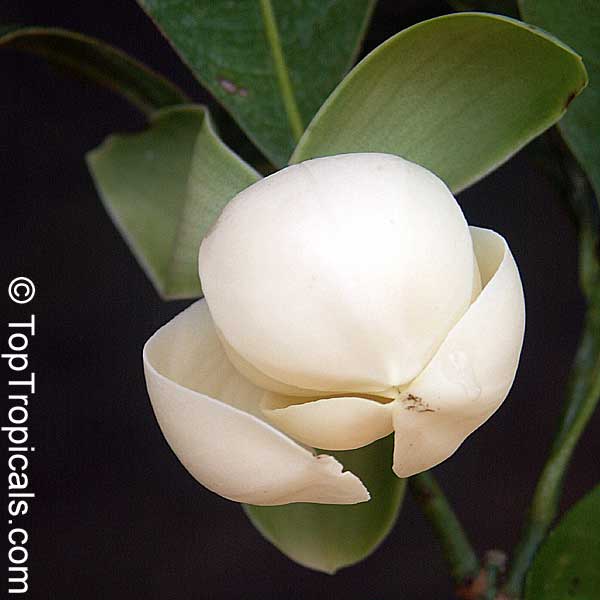
Magnolia
coco (Liriodendron Coco)

Magnolia
liliifera (Talauma candollei)
Others in this group are usually more petite in foliage and flower. They include Magnolia coco, M. guangnanensis, M. odoratissima, M. liliifera [Talauma candolleil], and many other natives from the greater Yunnan region southward into the Malay Peninsula. Thus far, only M. coco is widely available outside of China and has been grown successfully in Florida. Many of the Gwillimia magnolias are used in perfume production in China.
The glossy-leaved Magnolia lotungensis [Parakmeria lotungensis] and M. yunnanensis [Parakmeria yunnanensis] are often cultivated as street trees in their native Yunnan because of their "Gallery Pear-type" growth habit and their exceptionally glossy evergreen foliage. Their flowers are not as profuse and are less showy than those of other magnolia species, but these two species are well worth growing if only for their splendid foliage and outstanding form.
The Best for Last
Even with a growing number of evergreen magnolias to choose from, the most popular magnolia in the world remains Magnolia grandiflora. This native of the southeastern United States - from coastal North Carolina southward to central Florida, and west to eastern Texas - is widely cultivated in moderate temperate to tropical climates. From New York to Orlando, Italy to India, and Singapore to Brazil, M. grandiflora flourishes in all its glory. Even in China, with all its native evergreen magnolias, M. grandiflora is widely grown. In 1757, the famous botanist Dr. Alexander Garden of Charleston, South Carolina described M. grandiflora as "the finest and most superb evergreen tree that the earth produced." So notable are its qualities as an ornamental flowering tree that little effort has been made to cultivate closely allied species from Mexico, Central and South America. One of these, Magnolia tamaulipana of northeastern Mexico, is finally gaining some popularity, mostly as an oddity, since its flower fragrance is entirely different from the sweet lemony aroma of M. grandiflora.
Magnolia grandiflora will always be the queen of magnolias,
as perhaps it should be. Nonetheless, the potential availability of
many new species and cultivars of evergreen magnolias is good news for
tropical and subtropical gardeners. Exciting breeding programs are using
a variety of Asian species that show great promise for cultivation in
a range of climate zones. Many of these species have never been cultivated
outside their native homelands. They represent a breath of fresh air
for the horticultural trade and for all who admire the beautiful magnolia.
Magnolia
Care and Propagation
List
of magnolias in TopTropicals Catalog

